Model 370C. 135 hp 368 cid OHV V-12, three-speed manual synchromesh transmission, mechanical brakes on all four wheels with vacuum assist. Wheelbase: 134"
• One of only 953 V-12s produced for 1933
• Comprehensive restoration completed in 2011
• Upgraded electric starter for reliability and turn signals for added safety
• Full Classic eligible for all AACA, CCCA meets and Grand Caravans and Cadillac-LaSalle club events
The upright, almost carriage-like look of Cadillacs began to disappear in 1933. A facelift, simple in execution but startling in effect by GM’s head of design Harley Earl, transformed the 1933 Cadillac into a more modern-looking car. Architecture in Chicago and New York had a significant influence on automotive styling, and Earl hired men who had extensive architectural experience to design cars for General Motors. Telltale touches of Art Moderne, Art Deco and industrial design began to creep into automotive styling with stunning results. Both Cadillacs and companion LaSalles received modern skirted fenders, vee’d radiators and more swept back windshields. Roll-up windows were now commonplace, so Cadillac introduced “No-Draft” ventilation in the form of vent wing windows. At $3,395 this was not an inexpensive car in post-Depression America; Cadillac sold only 6,655 models among all four models for 1933 including 953 V-12s and 126 V-16s, its lowest output of the decade.
The V-12 was first introduced in 1931 and shared parts as well as dimensions and angles with its big brother, so production did not have to proceed from scratch. The Twelve was nearly the performance equal of the big Sixteen, with strong torque and similar top speed; from its 368 cubic inches, it produced 135 hp, 285 lb/ft torque and a top speed of over 80 mph.
Having first been restored in Canada’s rust-free province of British Columbia, this lovely V-12 Cadillac was later stored in a museum. It was acquired by a New York collector in 1995, in whose possession it remained until being bought by its current owner in 2008. The current owner then treated the car to a comprehensive professional restoration in order to bring the car back to showroom condition. The restoration was completed in 2011.
The car was subject to media blasting after which the replacement of exposed minor areas of deteriorated wood and sheet metal became top priority. The engine was thoroughly examined and found to be in proper repair with the only major replacement necessary being that of a new timing chain. Many items were addressed including the electrical system as well as rebuilding the starter, generator and the electrical cut-out. Rear springs and shackles were replaced and an upgraded electrical fuel pump installed for reliable touring free of the fear of vapor lock. In addition, turn signals were installed for safety, as was a battery cutoff for use during storage. Instruments were rebuilt and even the clock reportedly runs well on the six-volt system.
The exterior paint finish includes four coats of color along with four coats of clear, wet sanded and buffed to a high gloss. Extra paint is included for the new owner. Finished in a subtle two-tone taupe exterior, the interior makes for a lovely contrast in brown tweed broadcloth and restored wood-grain trim work. The rumble seat also matches beautifully in high-quality chocolate brown leather. It is fitted with dual side-mount spares including metal covers and original Cadillac mirrors as well as an accessory trunk, all restored to their original factory appearance.
Whether at show or on tour, this handsome Cadillac is a Full Classic ready for CCCA events and AACA Glidden Tours and would certainly be a welcome addition at any Cadillac-LaSalle Club meet. Limited production and the performance and reliability of the V-12 make it an excellent addition to any collection.


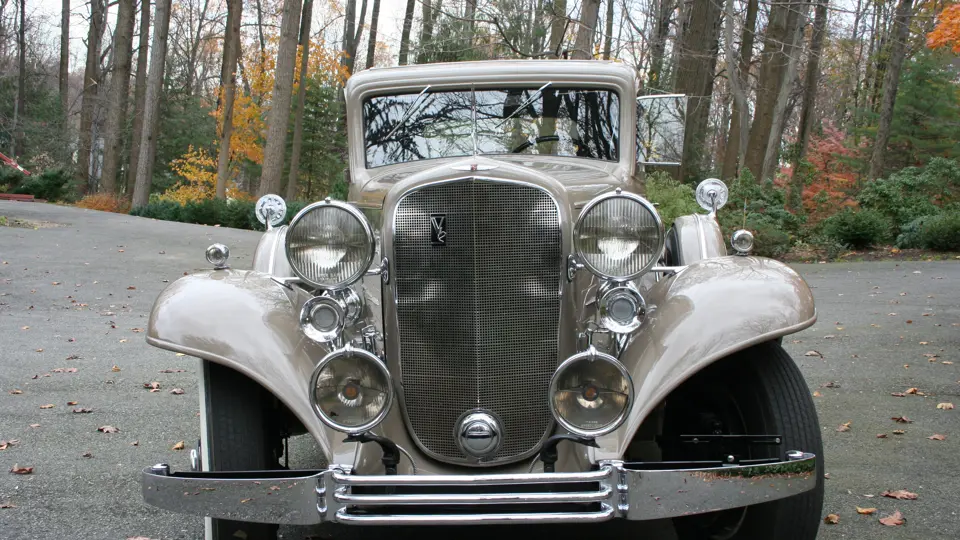

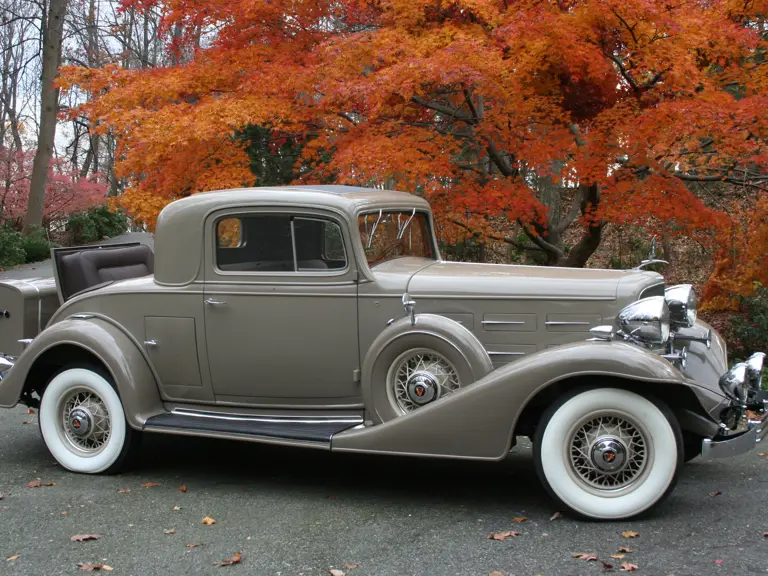
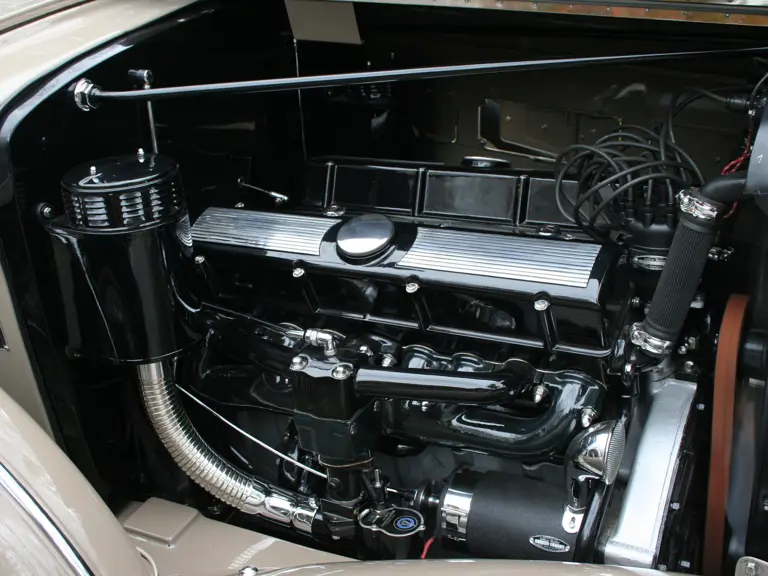
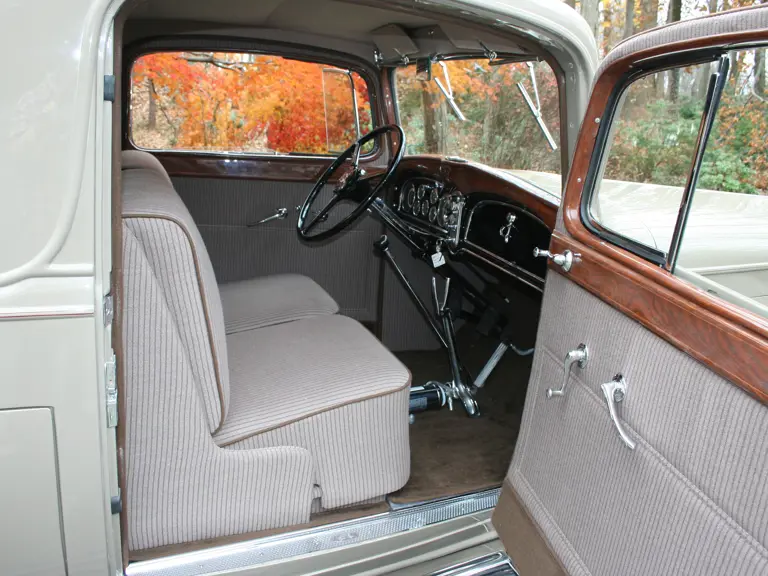
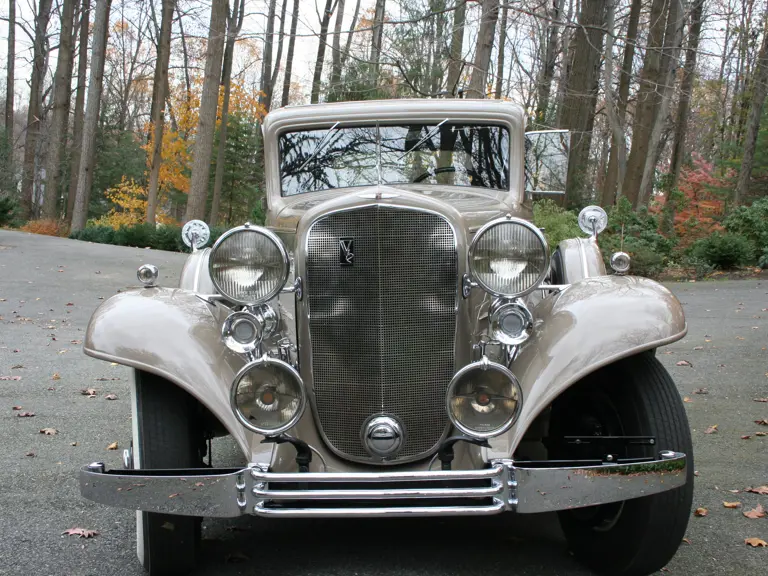
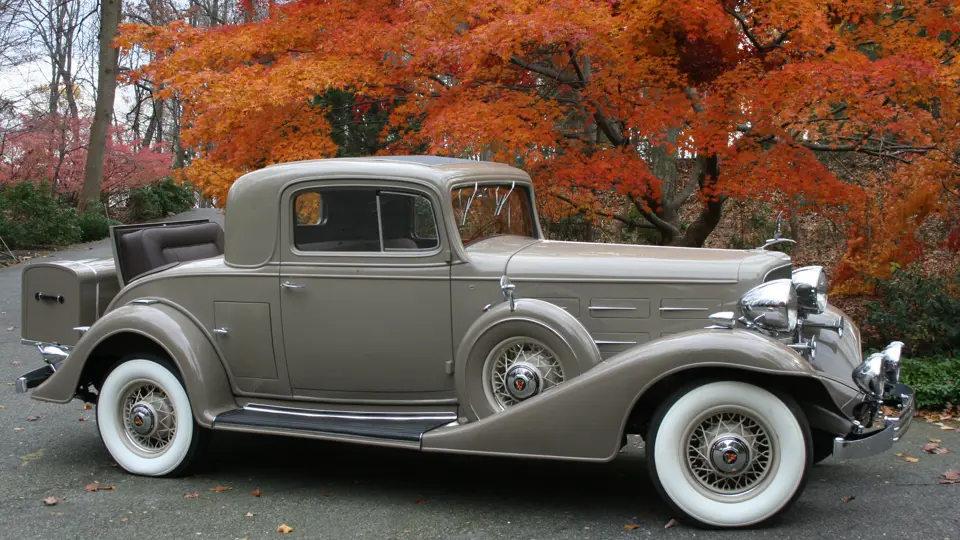
 | Phoenix, Arizona
| Phoenix, Arizona


